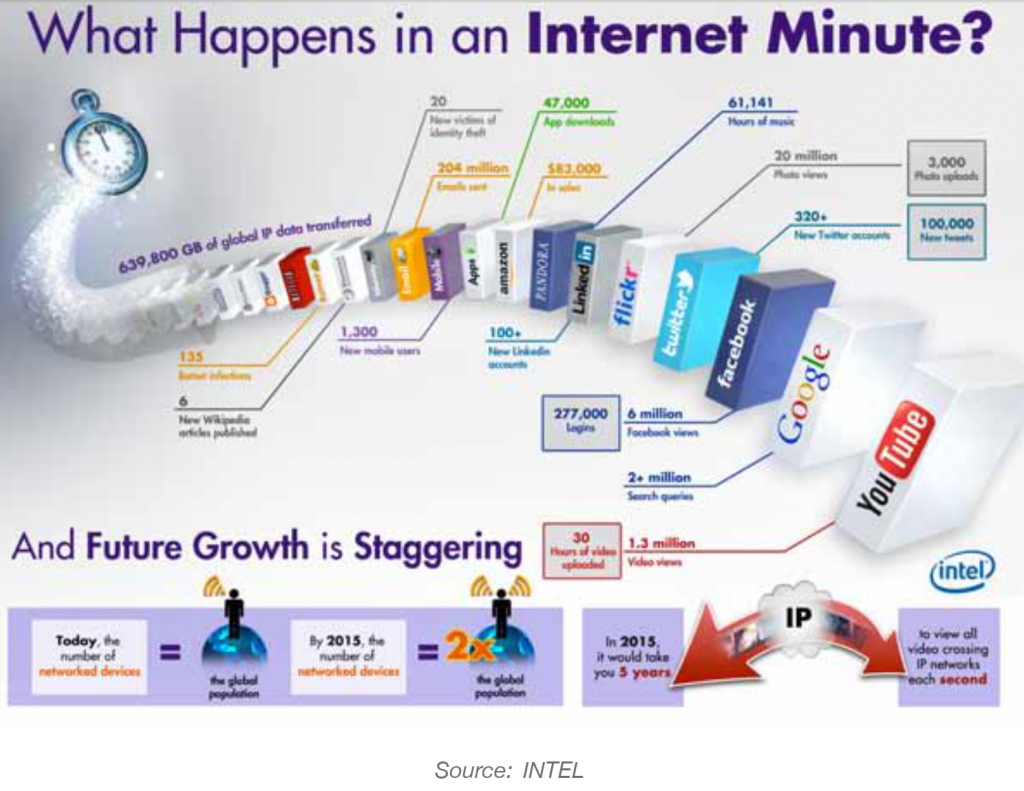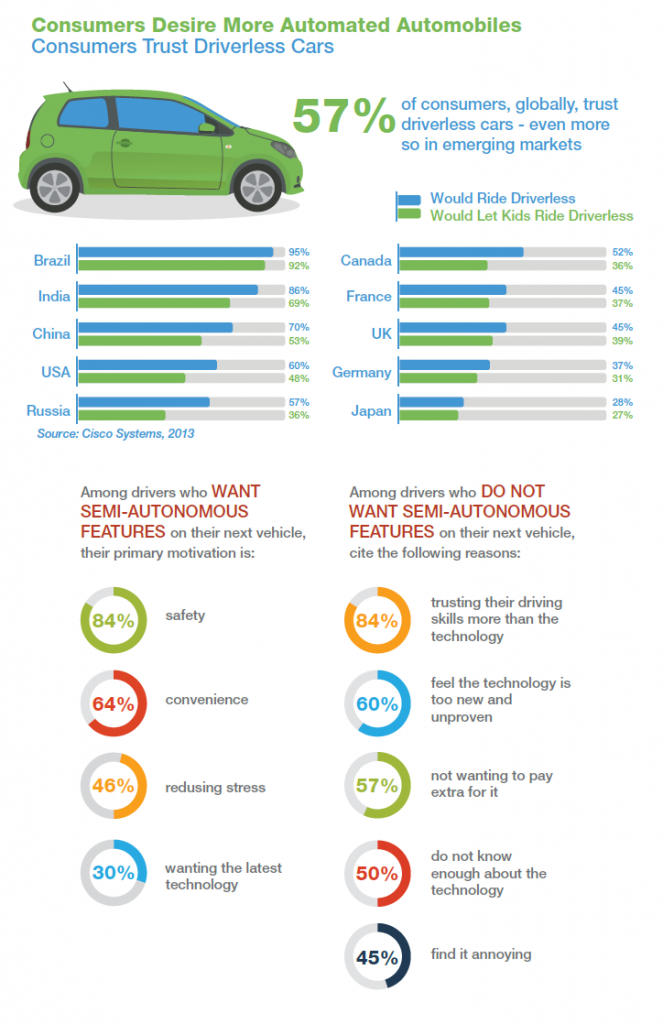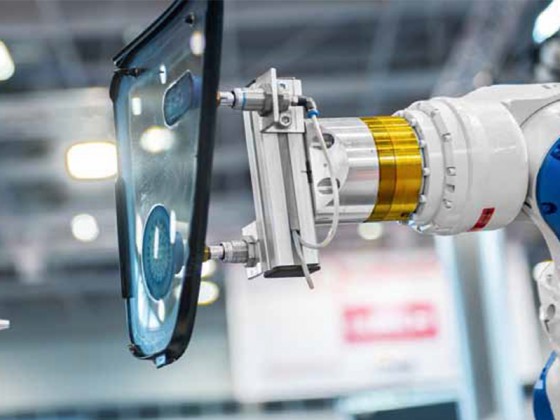by myForesight® Analytics
Assistance remains a primary goal of many modern technologies as consumers continue to seek out ways to manage and organize daily tasks. ‘Assistance technologies’ aim to augment, enhance, or improve the natural cognitive and physical abilities of humans in an attempt to simplify everyday tasks.
The advancements of ‘assistance technologies’ can possibly contribute towards increasing quality of life and and enhance safety. However, there are issues of trust as most of these technologies are internet connected and requires a collection of personal data and, in some cases, necessitate physical reliance on machines. Trust is not only in machines, but also in the companies that produce the technology and the institutions that monitor their standards. In short, the future of ‘assistance technologies’ hinges not only upon scientific advances, but also on the relationship between humans and emerging technologies.

DRIVERS
1. Increased expectations of personal devices. By 2020 it is estimated that the Internet will reach in excess of 5 billion users worldwide. With the advancement of internet of things, various types of portable devices will be introduced and connected to the internet, for various purposes – from assisting daily routines to improve productivity As a result, the ability to simply connect to the Internet is no longer enough for consumers. Rising consumer expectations are driving the technology industry toward providing tools that are more powerful, adaptive, and versatile.
 2. An aging population. Due to advances in medicine and healthier lifestyles, the average lifespan is increasing worldwide. As lifespans increase, demand for technologies that extend quality of life by improving vision, hearing, dexterity, and cognitive skills will grow stronger. As Malaysia will be an ageing nation by 2035 and 15 per cent of the population are classified as senior citizens, the government has taken steps in its preparation to face the challenges of an ageing nation, including ensuring adequate health care services, financials as well as infrastructure that are senior-citizen friendly.
2. An aging population. Due to advances in medicine and healthier lifestyles, the average lifespan is increasing worldwide. As lifespans increase, demand for technologies that extend quality of life by improving vision, hearing, dexterity, and cognitive skills will grow stronger. As Malaysia will be an ageing nation by 2035 and 15 per cent of the population are classified as senior citizens, the government has taken steps in its preparation to face the challenges of an ageing nation, including ensuring adequate health care services, financials as well as infrastructure that are senior-citizen friendly.
3. Advances in artificial intelligence may soon allow machines to perform many tasks and roles currently conducted by humans. It has been projected that in the next 20 years up to 50% of today’s jobs could be computerized. Machines are adjusted either to assist or to replace human workers in certain roles aiming to improve productivity, and safety. Improved artificial intelligence. Advances in artificial intelligence may soon allow machines to perform many tasks and roles currently conducted by humans. It has been projected that in the next 20 years, up to 50% of today’s jobs could be computerized. Machines are adjusted either to assist or to replace human workers in certain roles, aiming to improve productivity, and safety.
4. Improved machine-tomachine communication. The Internet of Things (IoT)—an interconnected web of machines that are able to seamlessly communicate with each other—is becoming a reality. Movement toward the IoT will allow wireless devices to provide a greater level of information to end users and help further integration of technology into everyday life.
LAYERS OF TRUST
‘Assistance technologies’ rely upon a partnership between technology and users, which include seamless information sharing and undoubted trust. However, ‘trust’ in the technology industry is a multifaceted issue. It is not limited to trust in the capabilities of a machine, but also trust in the producer of the product and their ability to keep user data private and secure.
 Trust in technologies that augment human abilities.
Trust in technologies that augment human abilities.
Trust issue towards machines capable of performing certain tasks may differ in certain scenarios. For example, recently ‘assistance technology’ has received a lot of attention in the automotive industry as major companies continue to make strides toward incorporating or improving autonomous and semi-autonomous capabilities in vehicles. Despite the success of these technologies, only 57% of global consumers trust driverless cars. But, at the same time, consumers welcome integration of Advanced Driver Assistance Systems for their vehicles which include automatic emergency braking, parking assist, and sensors that help drivers stay in their lane.
A 2015 Endleman survey conducted across 27 countries suggested that consumers trust the technology sector more than any other business segment. In fact, despite the finding that consumers in the majority of countries surveyed reported an under-50% trust level in businesses in general, the study ranked trust in companies that produce technology at 78%. This research suggested that consumers may be more willing to trust the claims and products of technology companies. However, recent high profile security breaches and controversial data sharing with governments and corporate entities threaten to lower trust in the tech industry, unless greater strides are made to safeguard personal data.
Trust in data security.
To enable ‘assistance technologies’ to be further integrated into users’ daily life, users would have to share greater amount of personal data with machines and tech companies. However, consumers worldwide are becoming increasingly concerned about data security. In fact, 84% of wireless users globally report concern for the security of their personal information. These concerns are far from unwarranted as 71% of corporations reported that they were victim of cyber-attacks in 2014.
WHAT’S NEXT?
While the current rate of technological advancement is increasing, trust in new technologies is often slow to build. As a result, some products and services that employ ‘assistance technology’ may initially be met with skepticism and concern, especially from the older consumers. The Millennials, who grew up as ‘digital natives’, have a higher level of tolerance and comfort in integrating technology into their lives. Thus, in addressing different adaptation from different age groups, companies producing ‘assistance technologies’ may wish to help consumers draw connections to how their products are actually improvements upon devices of the past. For example, assisted braking could be framed not as a way of removing the human element from driving, but rather as advancement comparable to existing technologies aimed at reducing car accidents such as anti-lock and emergency braking.
Assistive technology for physical and mental enhancement will likely increase as populations continue to age and their natural physical and mental abilities begin to wane. Despite accelerating demand for technologies that can improve mental or physical performance, the challenges are for technology producer to deliver not only on the promise of enhanced user abilities, but also on the security of personal data. Rather than focusing on what a machine can do for a consumer, it may be more beneficial to frame a technology’s capabilities in terms of what it can help users do themselves.
In a recent study, a robot was used to direct individuals to a fire escape during a mock fire drill. This study found that 85% of people were willing to follow the machine even when it visibly broke down or led them in the wrong direction. This suggests
that in a stressful situation people may be much more willing to trust a technology if its purpose is clear and it appears to have been designed to meet a specific task. With this in mind, companies that develop assistance technologies should consider both form and function during the design process. Technologies that appear to be designed to perform a clearly delineated task may garner trust more quickly than those whose function is not immediately clear.
The future of manufacturing may be impacted by the integration of assistive technology. Advancement in Artificial Intelligence, Virtual Reality, and autonomous robotics may soon allow machines to fill roles that are currently difficult or dangerous for humans. For example, in construction and manufacturing industries, such ‘assistance technologies’ as self-driving vehicles and robotic workers may be able to reduce workplace injuries while also improving efficiency. Meanwhile, heads-up displays could be used to improve worker productivity by virtually projecting information to a user in a hands-free environment. Governments have also been exploring the use of robots as tools for search and rescue as well as for firefighting. Advances in these areas may not only provide for increased safety and heightened efficiency, but also demonstrate the trustworthiness of autonomous and semiautonomous technologies to the general public.










